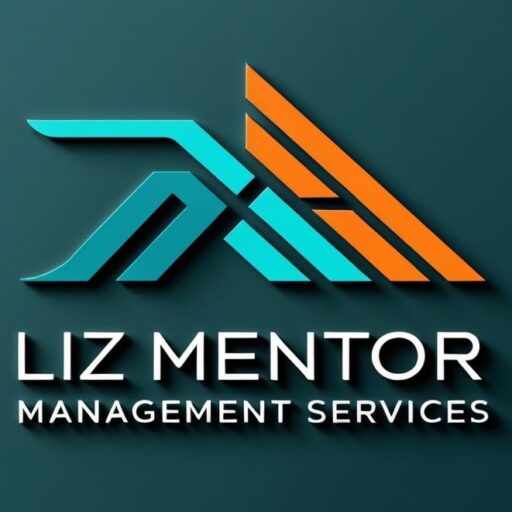Reading Body Language: Decoding the Unspoken Signals in the Workplace
In professional settings, communication is more than just words. In fact, studies suggest that only about 30% of communication is verbal, with the remaining 70% conveyed through body language, tone, and other non-verbal cues. Learning to read body language is not just a soft skill—it’s a critical workplace competency that can improve relationships, enhance influence, and help you navigate complex interactions with confidence.
Understanding the unspoken messages in your workplace allows you to anticipate reactions, respond effectively, and build stronger connections with colleagues, clients, and stakeholders. In this article, we’ll explore the core principles of reading body language, how to interpret common cues, and practical ways to leverage this knowledge in professional environments.
Why Reading Body Language Matters
Body language serves as a window into people’s thoughts, feelings, and intentions. While words can be scripted or misleading, non-verbal cues are often more honest. In the workplace, this skill can help you:
Identify engagement and attention levels during meetings.
Detect discomfort, hesitation, or resistance to ideas.
Strengthen negotiation and influencing skills.
Improve leadership effectiveness by understanding team dynamics.
For example, a team member who nods occasionally but avoids eye contact may be agreeing outwardly while harboring doubts. Recognizing such cues allows managers to address concerns proactively.
The Basics: Head Position and Gestures
Reading body language starts with observing posture and gestures. Subtle movements can convey confidence, uncertainty, agreement, or disagreement.
Head Position: A slightly tilted head can indicate curiosity or interest, while a lowered head may signal submission or fatigue. Rapid nodding often suggests agreement, but it can also indicate nervousness.
Hand Gestures: Open palms generally convey honesty and openness, whereas clenched fists can indicate tension or defensiveness. Pointing may come across as aggressive, so context matters.
By understanding these basic cues, professionals can interpret unspoken messages and respond appropriately.
Open vs. Closed Body Language
Body language can often be categorized as open or closed:
Open Body Language: Arms uncrossed, torso facing the speaker, relaxed posture, and appropriate gestures. These signals suggest receptiveness, confidence, and engagement.
Closed Body Language: Crossed arms, leaning back, avoiding eye contact, or fidgeting. These cues may indicate discomfort, defensiveness, or disagreement.
In the workplace, recognizing these signals helps leaders adapt their communication style to foster collaboration and trust. For instance, an employee with closed body language may need reassurance or clarification to feel comfortable contributing.
The Eyes Have It: Understanding Eye Contact
Eye contact is one of the most powerful non-verbal signals. It communicates attention, honesty, and confidence—but it must be balanced:
Direct Eye Contact: Conveys interest and engagement.
Too Much Eye Contact: Can feel intimidating or aggressive.
Avoiding Eye Contact: Often indicates discomfort, distraction, or evasiveness.
Blinking and Pupil Dilation: Subtle cues that can reveal stress or heightened emotional states.
By observing eye behavior alongside other body signals, professionals gain valuable insights into emotions and intentions.
Practical Illustration: Reading Body Language in Meetings
Imagine a project meeting where a manager presents a new strategy. Most team members nod occasionally, but one individual avoids eye contact, leans back, and fidgets with a pen.
Reading these cues, the manager can recognize potential resistance or uncertainty. Instead of proceeding without acknowledgment, the manager might ask for input, clarify points, or provide reassurance. This proactive approach prevents miscommunication and builds trust.
Similarly, during client presentations, observing subtle reactions—like a client leaning forward in interest or crossing arms in hesitation—can guide the presenter in emphasizing key points or addressing concerns.
Gender Differences and Contextual Awareness
When reading body language, it’s important to consider gender differences and context. Men and women may display emotions differently, and cultural norms influence gestures and personal space.
For instance, a gesture that indicates enthusiasm in one culture may seem aggressive in another. Being sensitive to these nuances ensures that interpretations are accurate and respectful, preventing misunderstandings in diverse workplaces.
Tips for Reading Body Language Effectively
Observe Patterns, Not Single Gestures: A single action may be misleading; look for clusters of behavior.
Consider Context: Workplace hierarchy, stress levels, and cultural norms influence signals.
Watch the Whole Person: Combine posture, facial expressions, gestures, and eye contact for a comprehensive read.
Practice Empathy: Understanding emotions behind body language allows for more thoughtful responses.
Correlate with Verbal Communication: Align spoken words with non-verbal cues to assess authenticity.
Regular practice of these strategies improves accuracy and confidence in interpreting body language.
Applying Body Language Reading in the Workplace
Professionals can leverage this skill in several scenarios:
Interviews: Understanding candidate responses beyond words can inform hiring decisions.
Negotiations: Detecting subtle cues can guide strategy and build rapport.
Team Management: Recognizing discomfort or disengagement enables proactive support.
Presentations: Adjusting delivery based on audience reactions increases engagement and persuasiveness.
Reading body language allows employees and leaders to navigate professional interactions with insight and finesse, enhancing both communication and outcomes.
Common Mistakes to Avoid
Even with knowledge of body language, misinterpretations can occur:
Jumping to Conclusions: Avoid assuming motives based on a single gesture.
Ignoring Context: Consider environmental, cultural, and situational factors.
Overanalyzing: Excessive focus on every movement can lead to misjudgment.
Neglecting Self-Awareness: Your own body language affects how others respond; alignment is key.
Being mindful of these pitfalls ensures accurate reading and ethical application of body language skills.
Final Thoughts
Reading body language is a critical skill for anyone navigating the modern workplace. It allows professionals to decode unspoken messages, respond effectively, and build stronger connections. From team collaboration to client interactions, understanding non-verbal cues enhances communication, trust, and influence.
By observing posture, gestures, facial expressions, and eye contact—while considering context, culture, and patterns—employees can gain insight into emotions and intentions that words alone cannot convey.
Mastering the art of reading body language ensures that you not only hear what is said but also understand what is meant, creating a professional edge in every interaction. The ability to read the unspoken is not just a skill—it’s a strategic advantage in building relationships, leading teams, and thriving in the workplace.



